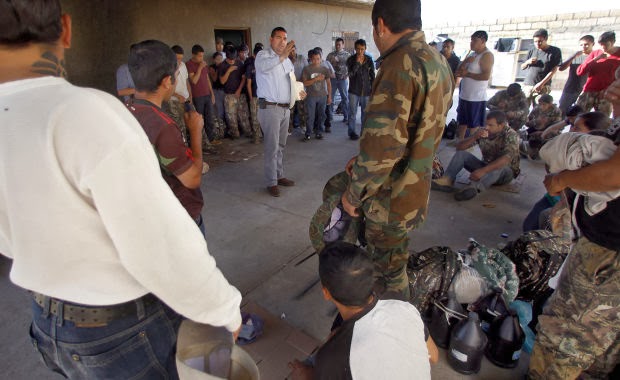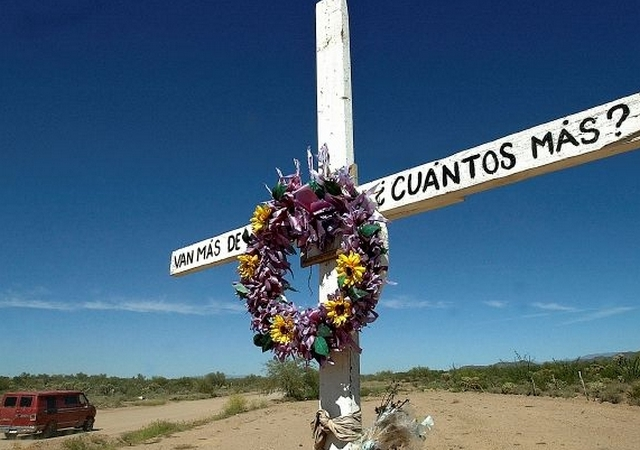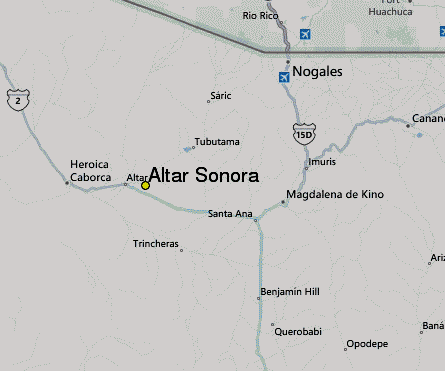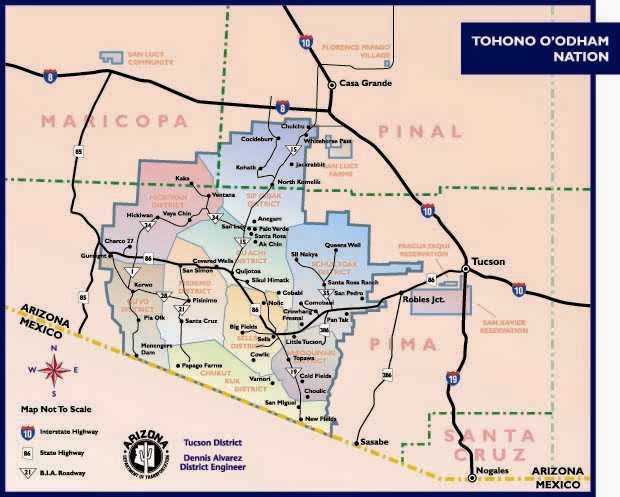| Online: | |
| Visits: | |
| Stories: |

| Story Views | |
| Now: | |
| Last Hour: | |
| Last 24 Hours: | |
| Total: | |
Chapo was not above kidnapping and killing migrants
Borderland Beat
by Óscar Martínez
The narcos, omnipotent narcos, kidnap migrants from Altar heading to the crossing points. Altar is 100 kilometers from the border, but it is the town where the migrants gather supplies before heading towards the unforgiving desert, which can be so cold that it burns or so hot that it burns.
After gathering hoodies, coats, gloves, hats, those who attempt to battle the desert travel 100 kilometers of dirt road between Altar and El Sasabe to reach the border and choose a location where they will attempt to pass. Locations with names such as, el poste verde, el carro quemado, el cerrito ( green pole, burnt truck, little mountain).
It was in that stretch of land, controlled by “Halcones” (narco lookouts), that the migrants were taken from the trucks that were transporting them to El Sasabe.
I was in Altar when the kidnappings occurred. When I asked taxi drivers and drivers of vans why there was so much cruelty, kidnappings with no ransom requests, his response was simple and unanimous: the narcos were dispatching “mules” and they did not want migrants wandering around because they bring “heat” to the area.
The “burreros” are men – teenagers mostly – working as drug mules. They carry 20 kilograms of marijuana on their backs and are released into the desert, with the guidance of a coyote and trusted operative of the local kingpin.
“Narco” is a name used to label just about anyone: a cocaine street vendor, a truck driver who transports two kilograms of cocaine in his tires, a young man from Sinaloa that works in the fields cutting tomatoes, then goes to work in Altar as a “mule”.
 |
| Padre Prisciliano Peraza blesses migrants |
I interviewed one of the truck drivers that had been released from the ranch with the warning that no driver could transport migrants until further notice. He said to me:
“If I tell you something and they hear about it, tomorrow I will be killed, I would not survive a single day. And they would find out. Here, everyone is corrupt.”
I interviewed a Salvadoran migrant that, for lack of money to pay for transport, had decided to first send his sister. She fell victim to the kidnappings. I interviewed him in Altar, the day of the kidnapping, when he was still shaking from the fear, maybe the anger. He said this to me:
“I already spoke with the coyotes who have returned, and some truck owners who have gone to see if there was anything left in the vans that were burned.
I spoke with a person that has access to information on the locals, someone who for safety reasons I will call “Mr. A”. He said this to me:
“Everyone knows what happens, they kidnap them, they rape the women, and beat the migrants, the smugglers, and drivers. But what are we going to do? Here we only have eight policemen, and traffickers have up to 50 well-armed men and many corrupt authorities.”
I left Altar on the recommendation of my contacts, and returned in April, month and a half after the mass kidnapping. I interviewed Father Peraza. He said this to me:
“They had them at a ranch close to El Sasabe, but they only wanted to give me 180 victims, the badly beaten ones, the ones with broken ankles or those with heads split opened from beatings with bats. The rest of the 300 I don't know what happened to them, I don't know if they released them.”
Those who were released vanished. They returned to their country, they returned with the coyote that had been contracted to try for another area, they surrendered to immigration. Each did what they decided, except for reporting the kidnapping.
Over the next three years I never stopped going to the Altar. I went back five times, and I learned more details. The Sinaloa Cartel, which in the area led by a man known as El Falcon or “sparrow hawk”, charged to the migrant 700 pesos (about 50 dollars) to let them board the van carrying them to El Sasabe. About 30 trucks worked in Altar, and each had two daily trips to the border. In every truck they carried 20 migrants.
The fees were charged by masked men in broad daylight and they inspected each truck that was heading out. In front of the church, on the central square of the village, the masked men counted and made sure that only 20 migrants were on board, received payments, and gave a piece of paper with a password to the driver of the truck, in case he was stopped in a checkpoint by one of the cartel guards.
Yes, thanks to the system of government corruption that the Sinaloa Cartel was able to buy, they can traffic drugs with relative ease in their border areas of control, when the offense comes to smuggling migrants it is committed in public without any worry, strategy, or modesty.
Anyone could say that those thousands of dollars collected in Altar are relatively small for a company headed by a man with an estimated fortune of more than 1 billion dollars. However, that sum of dollars from migrants not only occurred in Altar.
It was…is….a criminal business of the Sinaloa Cartel. The same in Mexicali, in Algodones, in Nogales, in Sonoita, Naco, in Agua Prieta… I am not saying that only in those places, El Cartel de Sinaloa charges fees, I say that in those places I know that they charge them, because I visited them.
When one talks about Central Americans Migrants traveling through Mexico, when one speaks of kidnappings, murders, clandestine graves, of 72 migrants massacred in Tamaulipas, of trafficking in women for sexual exploitations in the smelly brothels of Reynosa, the name of the cartel that is mentioned is that of Los Zetas.
However, if something is said in the midst of so much news and revelation, in the midst of so much tweet and post, amid so many doubts and photography, the mobster recently caught in Mexico led a mafia that day by day fucks with the lives of thousands of undocumented migrants.
Source: http://www.borderlandbeat.com/2014/03/chapo-was-not-above-kidnapping-and.html






